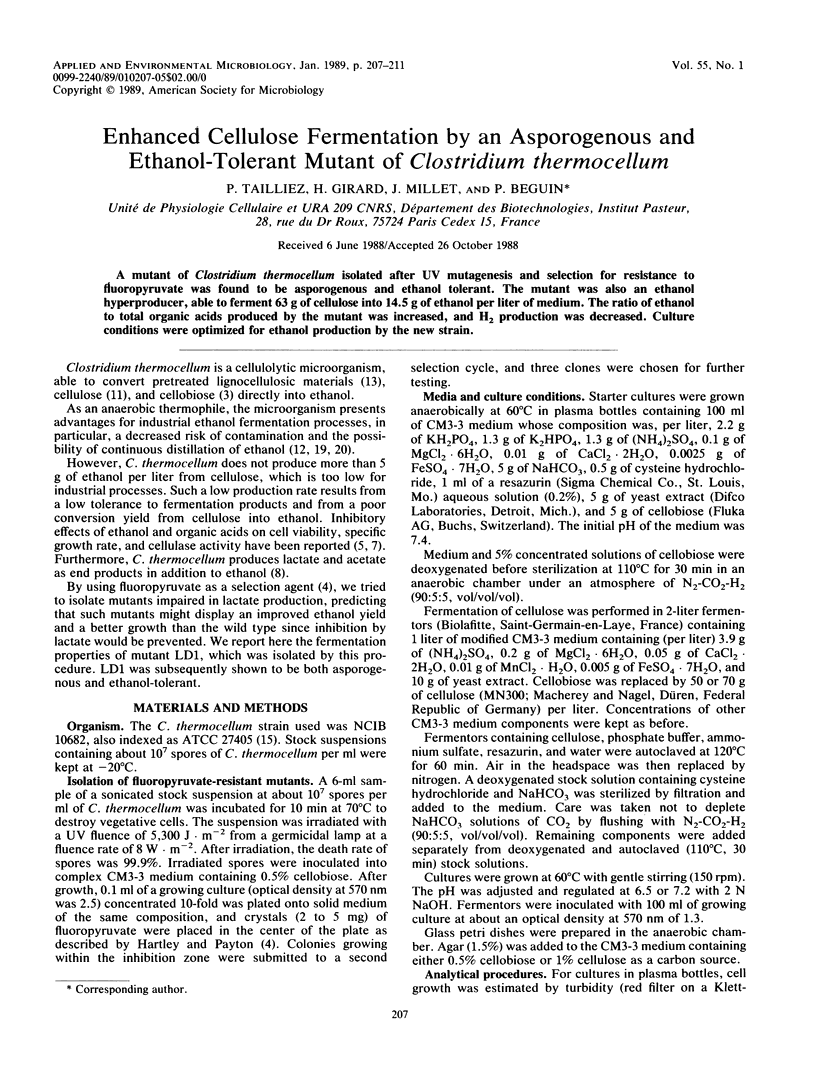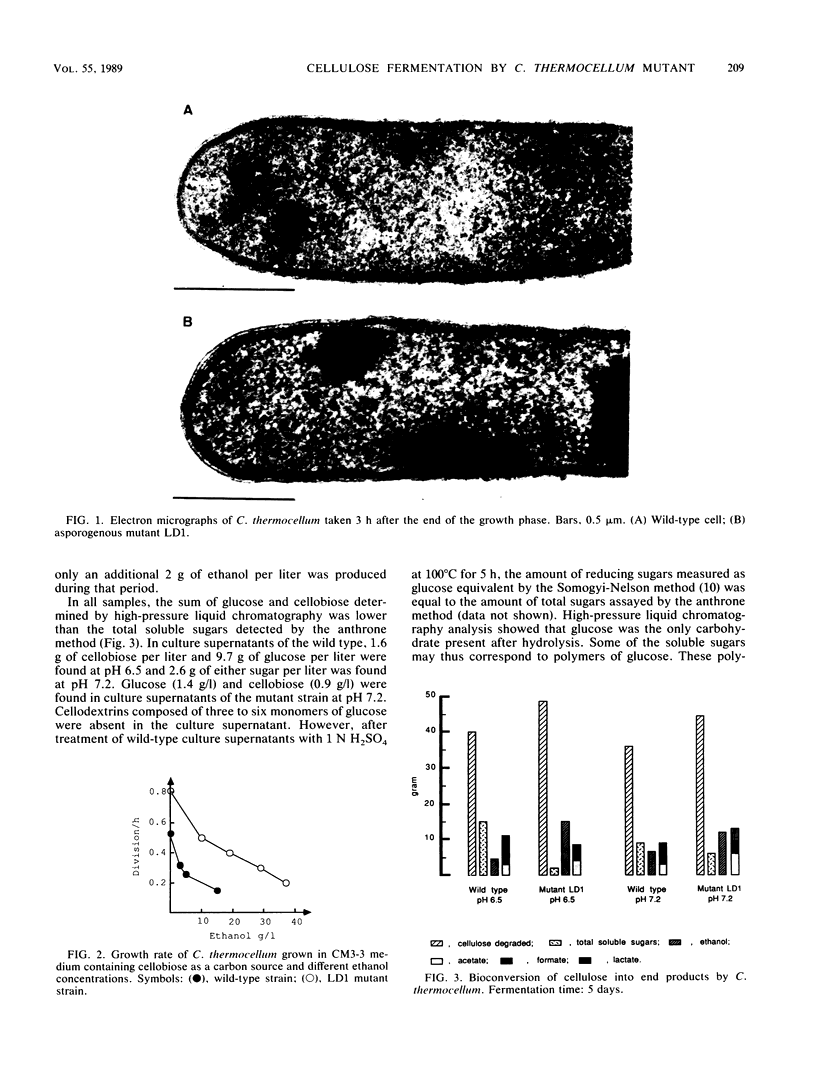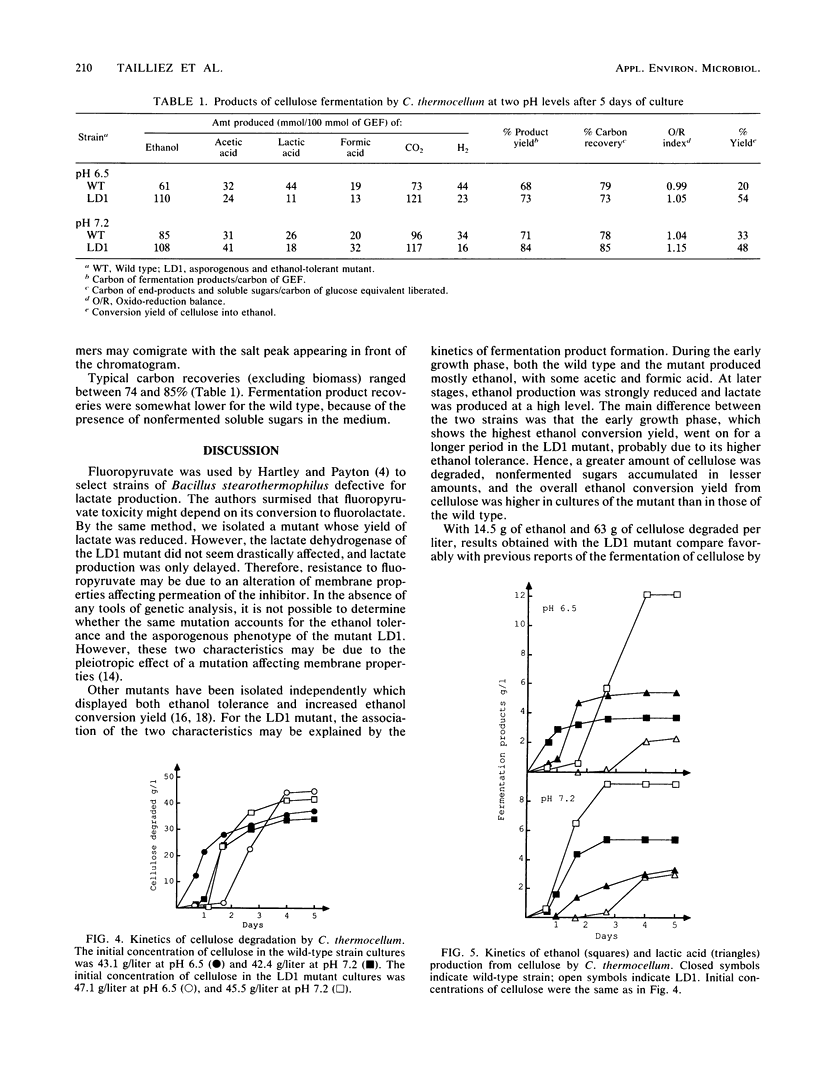Abstract
A mutant of Clostridium thermocellum isolated after UV mutagenesis and selection for resistance to fluoropyruvate was found to be asporogenous and ethanol tolerant. The mutant was also an ethanol hyperproducer, able to ferment 63 g of cellulose into 14.5 g of ethanol per liter of medium. The ratio of ethanol to total organic acids produced by the mutant was increased, and H2 production was decreased. Culture conditions were optimized for ethanol production by the new strain.
Full text
PDF




Images in this article
Selected References
These references are in PubMed. This may not be the complete list of references from this article.
- Brener D., Johnson B. F. Relationship Between Substrate Concentration and Fermentation Product Ratios in Clostridium thermocellum Cultures. Appl Environ Microbiol. 1984 May;47(5):1126–1129. doi: 10.1128/aem.47.5.1126-1129.1984. [DOI] [PMC free article] [PubMed] [Google Scholar]
- Hartley B. S., Payton M. A. Industrial prospects for thermophiles and thermophilic enzymes. Biochem Soc Symp. 1983;48:133–146. [PubMed] [Google Scholar]
- Johnson E. A., Madia A., Demain A. L. Chemically Defined Minimal Medium for Growth of the Anaerobic Cellulolytic Thermophile Clostridium thermocellum. Appl Environ Microbiol. 1981 Apr;41(4):1060–1062. doi: 10.1128/aem.41.4.1060-1062.1981. [DOI] [PMC free article] [PubMed] [Google Scholar]
- Lamed R., Zeikus J. G. Ethanol production by thermophilic bacteria: relationship between fermentation product yields of and catabolic enzyme activities in Clostridium thermocellum and Thermoanaerobium brockii. J Bacteriol. 1980 Nov;144(2):569–578. doi: 10.1128/jb.144.2.569-578.1980. [DOI] [PMC free article] [PubMed] [Google Scholar]
- Lee B. H., Blackburn T. H. Cellulase production by a thermophilic clostridium species. Appl Microbiol. 1975 Sep;30(3):346–353. doi: 10.1128/am.30.3.346-353.1975. [DOI] [PMC free article] [PubMed] [Google Scholar]
- Ng T. K., Weimer T. K., Zeikus J. G. Cellulolytic and physiological properties of Clostridium thermocellum. Arch Microbiol. 1977 Jul 26;114(1):1–7. doi: 10.1007/BF00429622. [DOI] [PubMed] [Google Scholar]
- Schaeffer P. Sporulation and the production of antibiotics, exoenzymes, and exotonins. Bacteriol Rev. 1969 Mar;33(1):48–71. doi: 10.1128/br.33.1.48-71.1969. [DOI] [PMC free article] [PubMed] [Google Scholar]
- Tailliez P., Girard H., Longin R., Beguin P., Millet J. Cellulose Fermentation by an Asporogenous Mutant and an Ethanol-Tolerant Mutant of Clostridium thermocellum. Appl Environ Microbiol. 1989 Jan;55(1):203–206. doi: 10.1128/aem.55.1.203-206.1989. [DOI] [PMC free article] [PubMed] [Google Scholar]
- Updegraff D. M. Semimicro determination of cellulose in biological materials. Anal Biochem. 1969 Dec;32(3):420–424. doi: 10.1016/s0003-2697(69)80009-6. [DOI] [PubMed] [Google Scholar]
- Zeikus J. G. Chemical and fuel production by anaerobic bacteria. Annu Rev Microbiol. 1980;34:423–464. doi: 10.1146/annurev.mi.34.100180.002231. [DOI] [PubMed] [Google Scholar]



